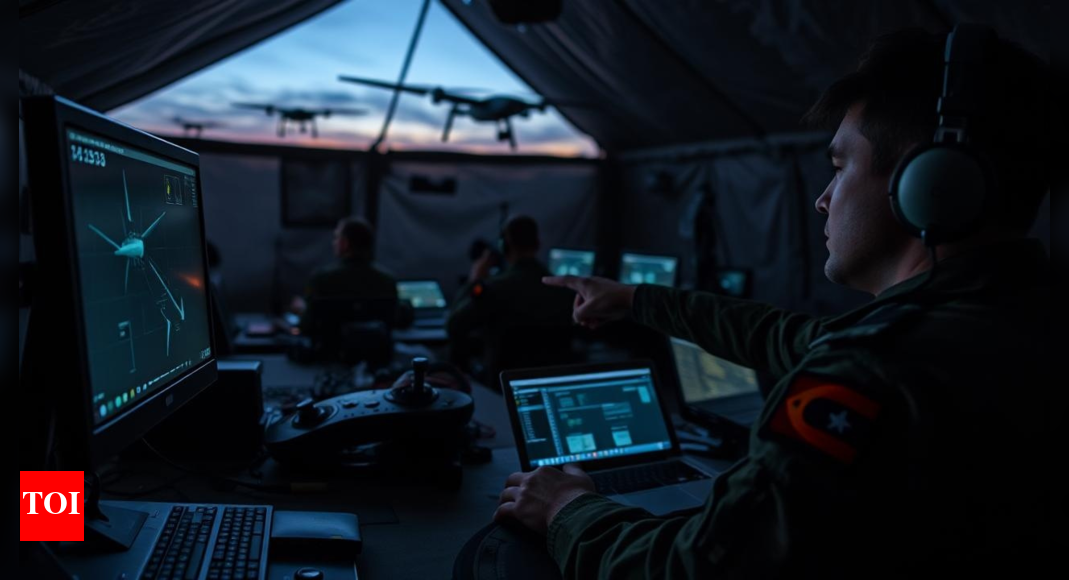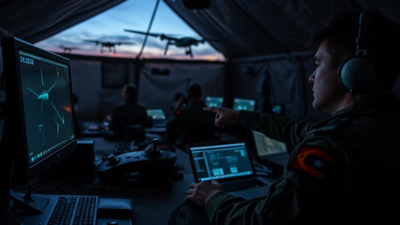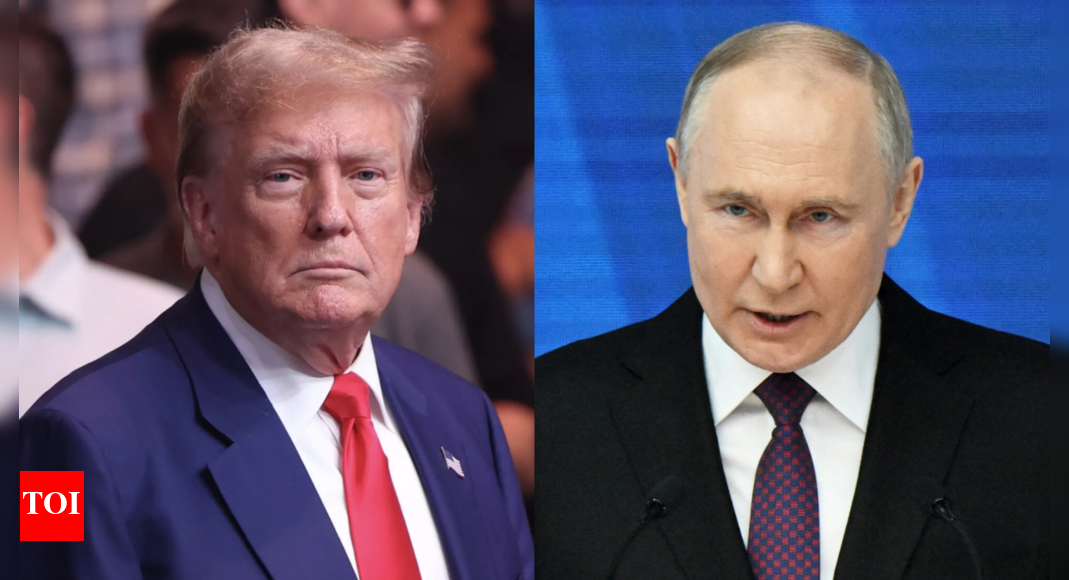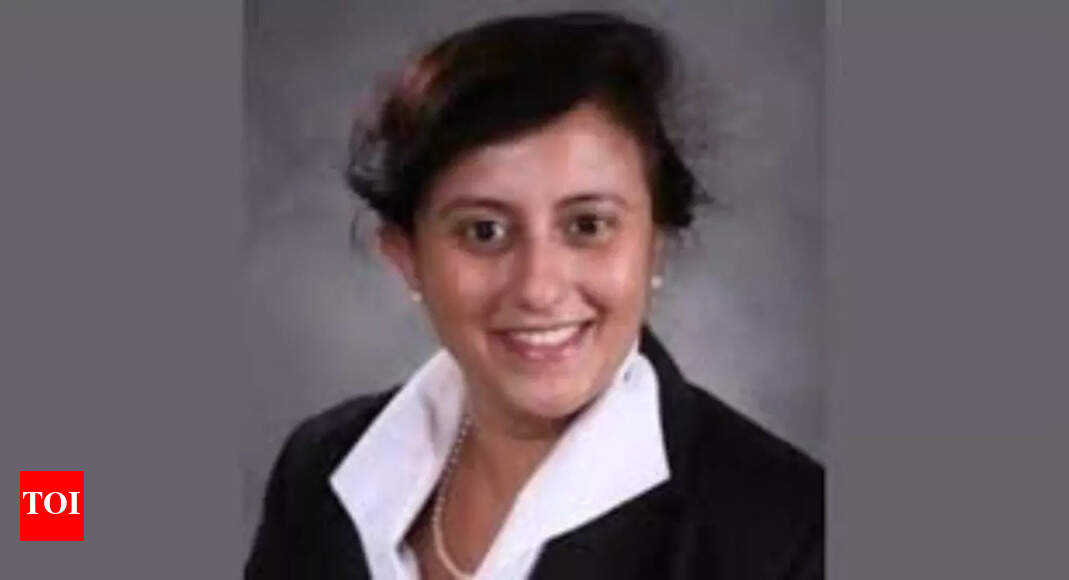Russian airstrikes on cities and towns across Ukraine are rapidly increasing in intensity. Between June 1 and June 20, Moscow launched 3,681 Shahed drones and fake drones, which serve to disorientate the Ukrainian air defense forces. A year ago, the average was at around 600 per month.To counter these attacks, Ukraine is looking for unconventional solutions, such as the use of interceptor drones.
Since the Russian invasion of Ukraine in February 2022, and the ensuing war, Moscow has not only increased the production of drones — it has also modernized them and changed deployment tactics.Current drones can maneuver and fly at high altitudes, which is why they cannot be reached by Ukrainian mobile air defense forces with machine guns.“Lately, the Russian Federation has been sending drones at an altitude of about 2 kilometers,” Yuriy Ihnat, spokesperson for the Ukrainian Air Force , told DW. “That’s why it’s becoming more and more difficult for our mobile units to intercept Shahed drones,” he added.“When drones fly lower, you can see them and shoot at them,” he said. “First you detect them acoustically, then visually and with the help of thermal imaging cameras and sighting devices. Opening fire on them is only effective once a drone is flying at an altitude of up to 1 kilometre.” Experts have expressed alarm at Russia’s latest tactics. “Russia is going to bomb our entire country with Shahed drones. They have significantly increased production and will continue to do so. If we don’t act immediately, our infrastructure, our production and our defense systems will be destroyed,” military and communications expert Serhiy Beskrestnov warned on social media. In his view, Ukraine needs to ramp up mass production of interceptor drones and train drone pilots.Ukraine needs different drones to take on Shaheds:At the front, the use of interceptor drones is anything but new. The Ukrainian military has been using first-personview, or FPV, drones, equipped with cameras that provide the drone pilot with real-time images, for quite some time. These drones are used against various Russian drones, including surveillance and kamikaze models.In order to destroy Shahed drones, which fly faster than many others, however, Ukraine needs special drones. “An Orlan, for example, flies at 100 to 140 kilometers per hour and Shahed drones can reach 200 to 300 kilometers per hour,” Serhii Sternenko, head of the Sternenko Community Foundation which provides the Ukrainian military with FPV drones, told DW.In such cases, drones with different characteristics were required for defense. “There are even Ukrainian-made ones. Our troops have already shot down Shaheds several times with such drones,” said Sternenko.Ukraine ramps up production of interceptor drones: According to Ukrainian President Volodymyr Zelenskyy, his country is focusing on the rapid development of interceptor drones to also defend cities in the hinterland.“In particular, we are working on interceptor drones to enhance protection against Shaheds,” Zelenskyy said at the G7 summit in Canada on June 17, pointing out that Ukraine is collaborating with partners to secure more substantial funding.Meanwhile, many Ukrainian manufacturers are already working on such drones. In particular, Wild Hornets, a nonprofit organization that focuses on the production of drones for the Ukrainian armed forces, has repeatedly demonstrated its ability to intercept Shahed and Gerbera drones with its Sting interceptor drone.At the same time, the German startup Tytan Technologies is testing its own interceptor drone with the Ukrainian military, and the Lviv-based company Besomar claims its drone can wait up to two hours in the air for a target.At Kyiv’s Dronarium Academy, future drone pilots are trained for aerial combat. They use special simulators for the Ukrainian armed force, and each FPV drone pilot needs about a month to learn to control a drone at high speed.“We are forming new units to cover cities in the hinterland with air defense systems equipped with interceptor drones and we are also training drone pilots,” said Air Force spokesperson Yuriy Ihnat.Interceptor drones are cheaper: “If all air defense groups had interceptor drones and we could use them to destroy enemy drones, we would already have something like ‘Star Wars’,” said Besomar co-founder Roman Shemechko.“That would be effective, as you wouldn’t be shooting at clouds anymore but instead pursuing a target to take it out. That’s more effective than simply shooting at Shaheds flying at an altitude of 3 kilometers or wasting a missile,” he added.According to experts, interceptor drones are also a reasonable alternative given the cost of anti-aircraft missiles. According to the Unmanned Systems Forces, a branch of the Ukrainian army that specializes in drone warfare, the price of an anti-aircraft missile can be as high as $1 million (€85.4 million), while an interceptor drone costs around $5,000.




